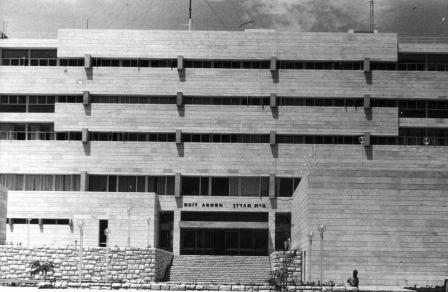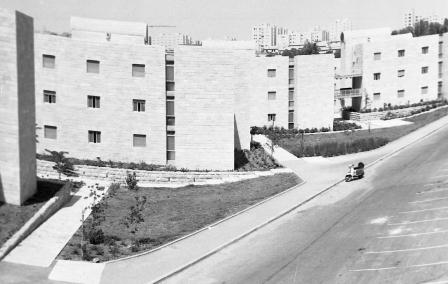These are the words with which David Reznik, one of the most prominent architects of Israel, described his life's work. And indeed, buildings planned by Reznik are an integral part of the urban scenery in every one of the cities of Israel. Reznik immigrated to Israel from Brazil in 1949 and became one of the founding architects of the state.


Reznik lived in Jerusalem most of his life, and fittingly, most of his work is located in the Israeli capital. A walk through the streets of Jerusalem serves, in many ways, as a sample of his professional achievements. Among the most important buildings he planned in the capital are the Van Leer Institute that was built in 1957, The Amir Center (1958), The Jerar Bachar Center (1960-1961), Beit Hanoa'ar (The Youth Institute) (1961), Yad Kennedy (The Kennedy Memorial Monument) (1966), and Beit Agron (1967). But his most notable work in Jerusalem is, of course, in the campus of the Hebrew University in Mount Scopus. Reznik took part in the architectural team that planned the blueprints for the rehabilitation of the Mount Scopus campus after the war of 1967, a mission that to him, resonated with symbolic meaning. "Mount Scopus", he said, "is the acropolis of the Jewish people, a symbol of the Cultural awakening of the Jewish people". In addition to his work in the campus of the Hebrew University, Reznik also planned the neighboring campus of the Brigham Young Mormon University (1987) and the nearby Hyatt Hotel that was completed in the same year.


As well as an active architect, Reznik also taught architecture in the Technion in in The Bezalel Arts Academy. In 1995 he was awarded with The Israel Prize for architecture. Reznik passed away in the beginning of the month, and he will be remembered as a prolific architect by international standards.
The personal archive of David Reznik, on its' numerous blueprints and plans, is kept in The Central Zionist Archives- drawers upon drawers that tell the tale of the emerging urban scenery of the state of Israel.